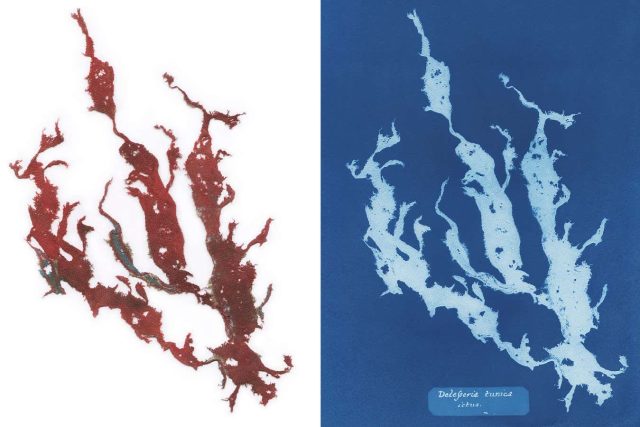
Mandy Barker’s “T-shirt Delesseria tunic ictus”
Mandy Barker
Nearly two centuries ago, botanist and pioneering photographer Anna Atkins‘s influential book, Photographs of British Algae: Cyanotype impressions, wowed readers with its scientific power and artistry. In it, Atkins presented images of seaweed collected from British shorelines made using the cyanotype method, a printing process carried out by laying objects on chemically coated paper and exposing it to ultraviolet light, creating a cyan-blue backdrop.
In artist Mandy Barker’s new book, Photographs of British Algae: Cyanotype imperfections, she uses the same technique to draw attention to the ongoing pollution crisis facing our oceans. Like Atkins, Barker also scoured the British coastline. Rather than finding natural beauty, however, she saw discarded clothing washing up onto the beaches. Her first find, she says, looked like seaweed. “It was kind of an attractive, beautiful piece of cloth.” But as pieces of jackets, dresses, shoes, underwear and school uniforms started appearing, the scale of the problem quickly became apparent to her.

Inspired by the clothes’ similar shape to seaweed, Barker decided to create new cyanotype prints (pictured top) from this found fabric (pictured above, not in the book) to replicate Atkins’s work, with small but significant changes. She draws attention to the climate costs associated with fast fashion by inventing Latin names for the garments, such as Delesseria tunica ictus – a nod to both the shirt she found and a genus of red algae that Atkins photographed.
Topics:










